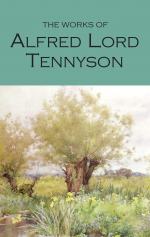|
This section contains 411 words (approx. 2 pages at 400 words per page) |

|
The Lotus-Eaters (Poem) Summary & Study Guide Description
The Lotus-Eaters (Poem) Summary & Study Guide includes comprehensive information and analysis to help you understand the book. This study guide contains the following sections:
This detailed literature summary also contains Quotes and a Free Quiz on The Lotus-Eaters (Poem) by .
The version of this poem was used to create this guide: Tennyson, Alfred. “The Lotos-eaters.” Poetry Foundation, https://www.poetryfoundation.org/poems/45364/the-lotos-eaters.
Note that all parenthetical citations within the guide refer to the lines of the poem from which the quotations are taken.
Alfred Tennyson was born in 1809 in Lincolnshire, England into a middle-class family. He began writing poetry in his teens with his brothers, and they succeeded in getting published when Tennyson was only seventeen. Later on, while attending Trinity College at Cambridge, Tennyson met the brilliant Arthur Hallam, with whom he immediately became close friends. The two were brought even closer with Hallam’s engagement to Tennyson’s sister, Emilia. However, in 1833, tragedy struck with Hallam’s sudden death due to a stroke during a trip to Vienna. With Hallam’s death, Tennyson fell into deep grief, during which, over seventeen years, he wrote a long elegiac poem, “In Memoriam A.H.H.” dedicated to his friend. The elegy is a lengthy exploration of personal grief as well as widespread concerns in Victorian culture related to science and religion. “In Memoriam” was finally published in 1850, which cemented Tennyson’s fame during the Victorian Era. In this same year, he was also appointed Poet Laureate of England. However, many of his poems published in prior collections had already met with great success, which includes titles still famous today, including “Locksley Hall,” “Ulysses,” and “The Lady of Shalott.”
In his body of poetry as a whole, like in his “In Memoriam,” Tennyson draws upon a wide range of themes and topics. In works such as “The Lady Shallot” and “Idylls of the King,” Tennyson draws upon Medievalism. In works such as “Maud” and “Mariana,” he touches upon the experience of depression and madness within the context of Mariana culture. In other works such as “Oenome,” “Ulysses,” and “The Lotos-eaters” (which is the focus of this study guide), Tennyson alludes to the storytelling of classical mythology. In terms of genre, Tennyson is also wide-ranging, writing in a both a lyrical and elegiac voice, as exhibited perhaps most profoundly in his “In Memoriam,” but also exploring dramatic monologue to examine the psyches of those who fell outside of the cultural norms of the Victoriam times, which he does, here, in “The Lotos-eaters” by giving voice to a group of men, who, rejecting the Victorian ethos of striving for achievement, eat the lotos and fall into a languishing oblivion.
Read more from the Study Guide
|
This section contains 411 words (approx. 2 pages at 400 words per page) |

|



